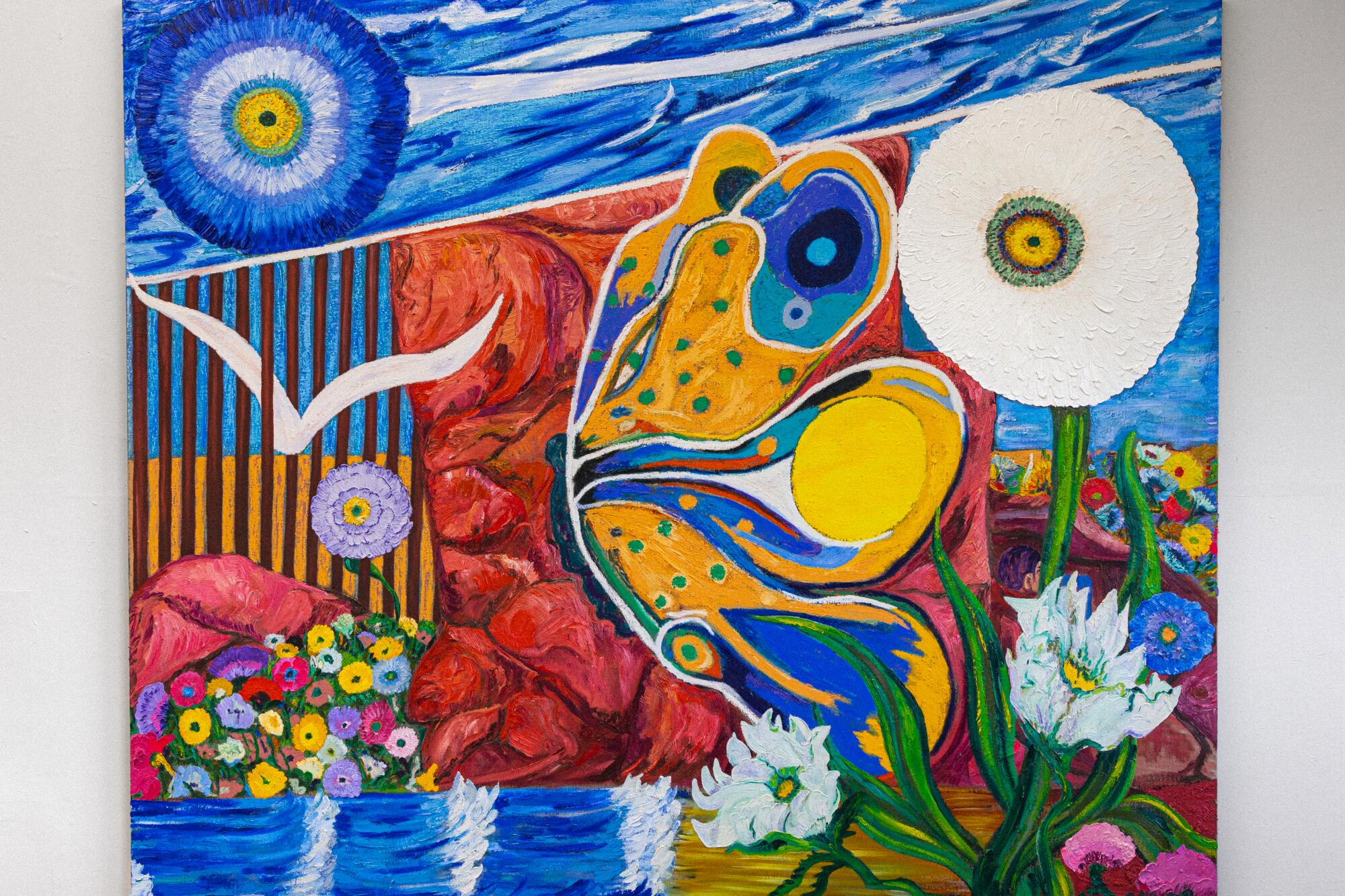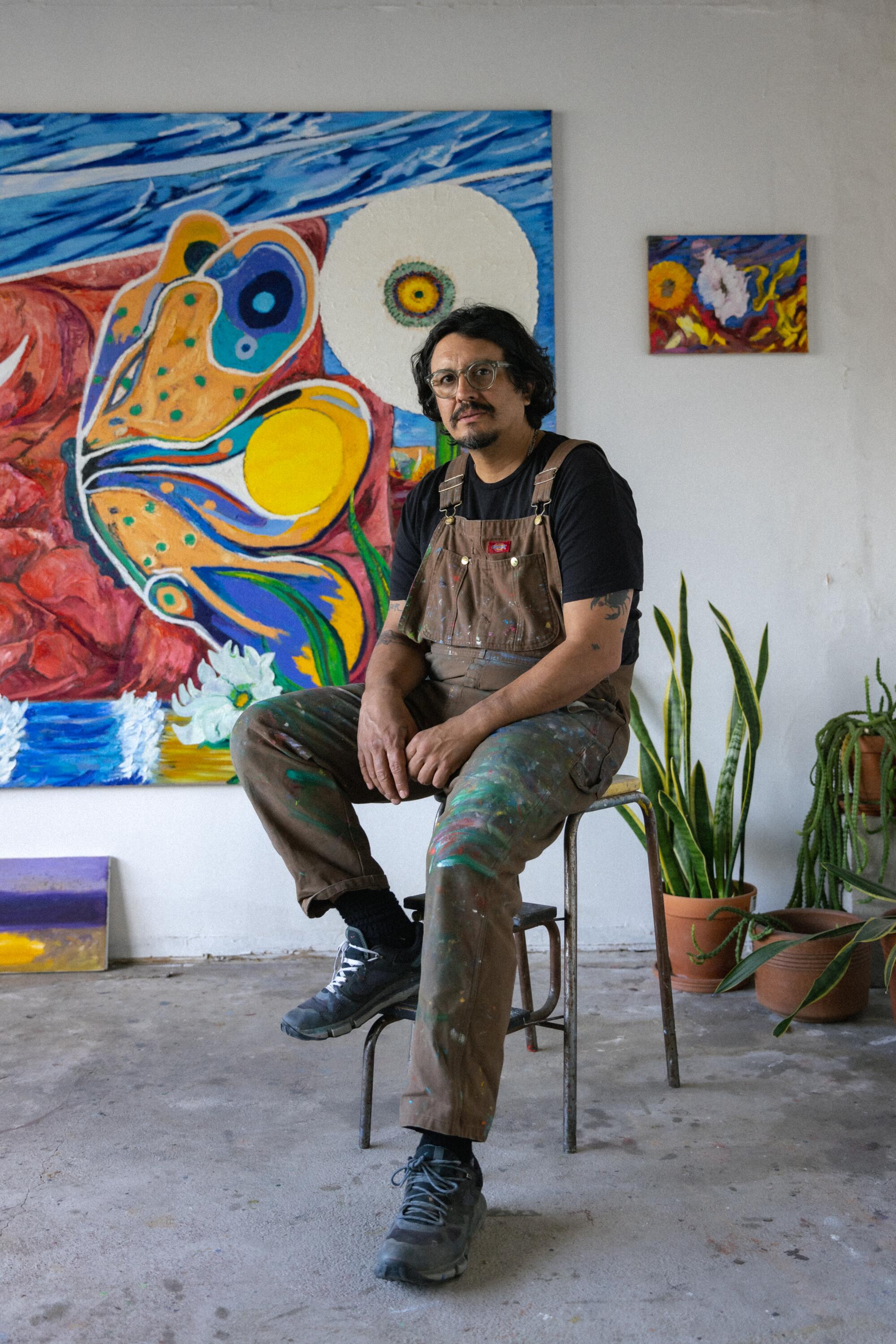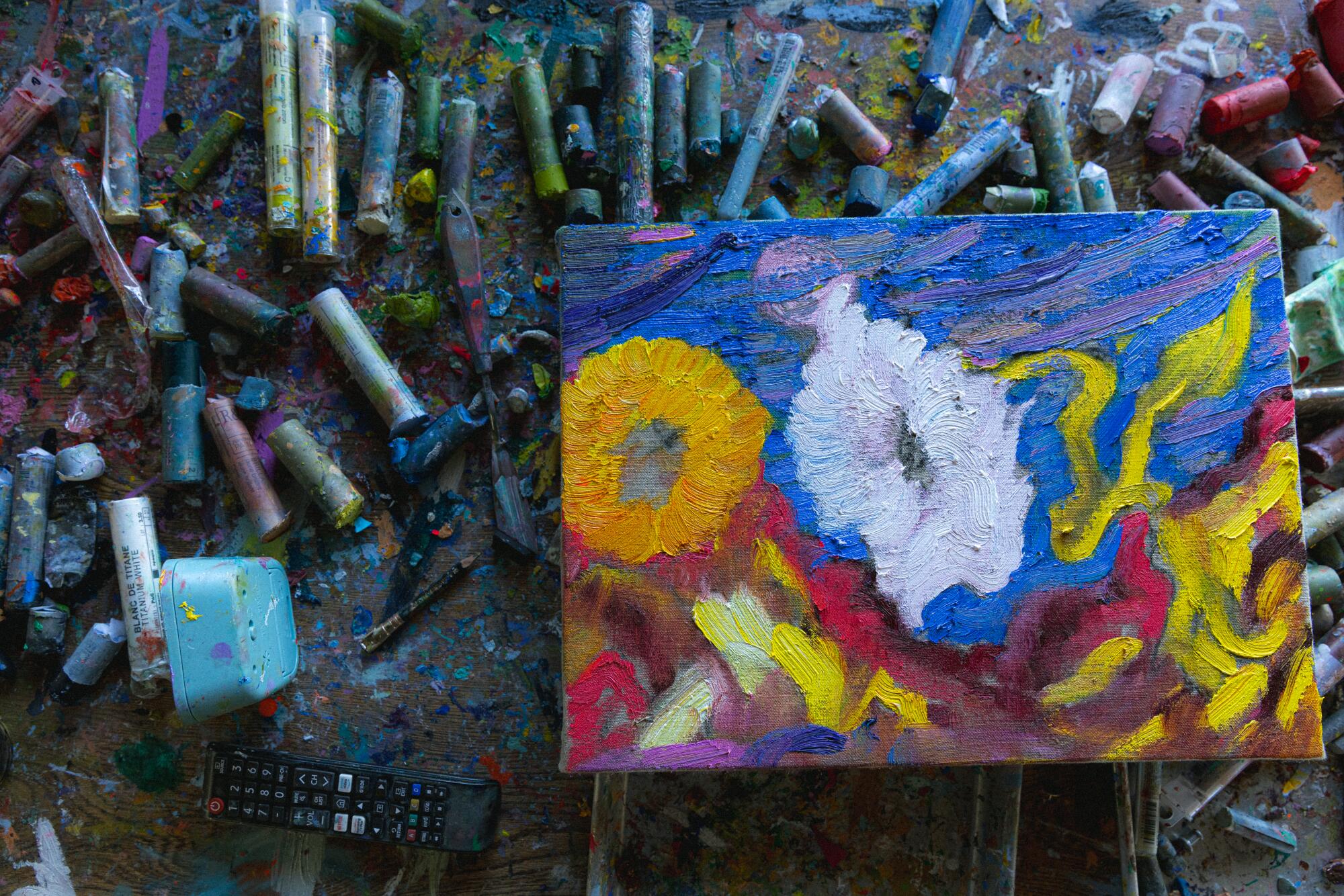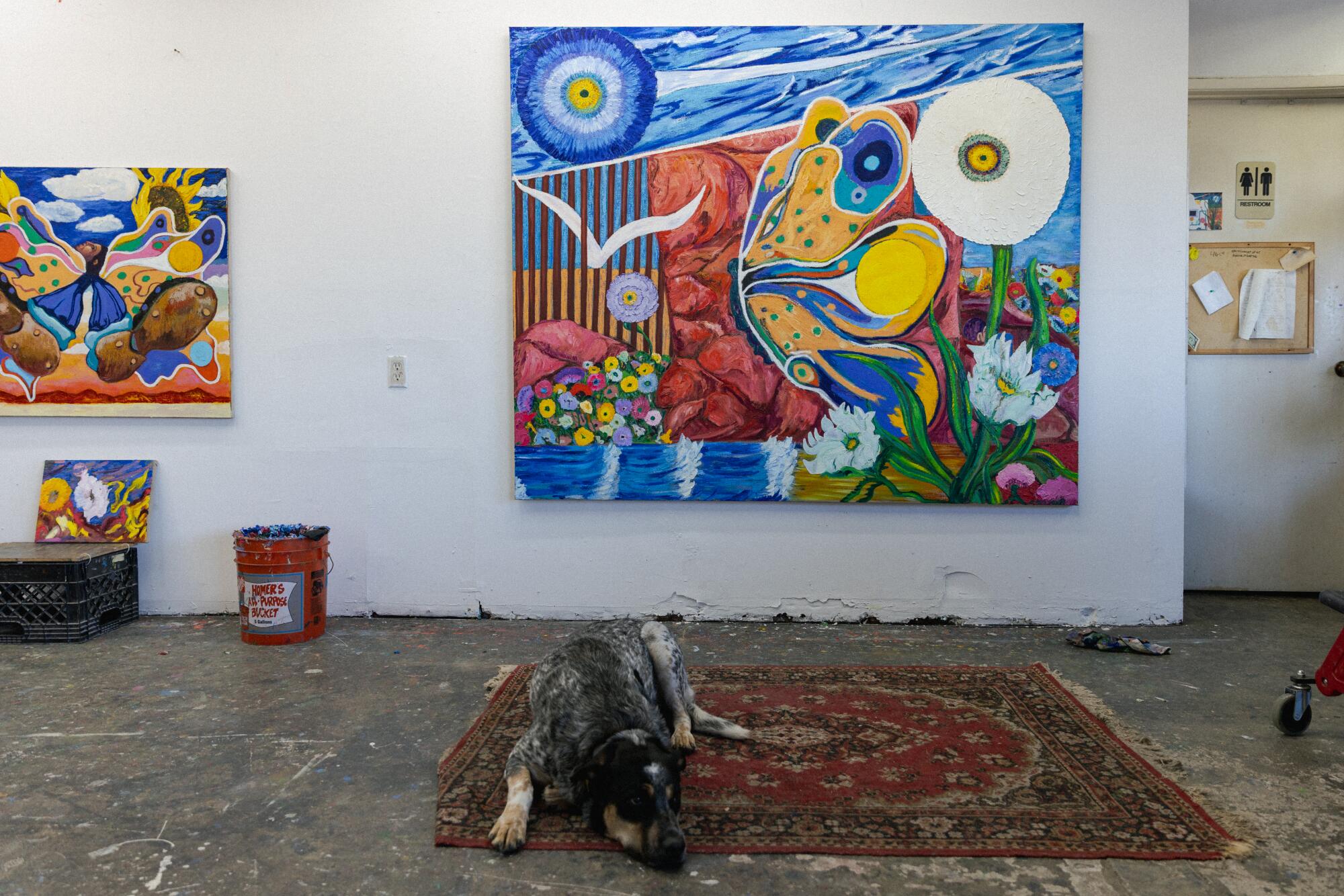
- Share via
This story is part of Image’s April issue, “Reverie” — an invitation to lean into the spaces of dreams and fantasy. Enjoy the journey.
I have an ongoing series with the butterfly. The idea of the butterfly came from my childhood memory. From a young age, I knew that people were crossing the border from Mexico through my little factory town I grew up in, Plaster City, Calif. I’d see them go into the night, not knowing how they would get through the harsh desert. I was fascinated and terrified that these people were making this trek, so I came up with this idea that maybe a butterfly picked them up and took them to safety.

The closest city to where I grew up is San Diego, on the U.S. side. The border fence goes straight to the beach, into the ocean. I’m showing that in this painting, called “In Between Worlds.” The Philip Guston-inspired mound of rock represents where I come from, the desert. And then there’s a little head of a figure sitting among the flowers. I don’t know if it’s me or someone crossing, waiting. When I would see people out there, they’d usually be hiding.
The idea of the butterfly is also connected back to migration. There are butterflies that travel up and down from Mexico to the U.S. and Canada and then back again. They feel so free to me when they’re flying. They’re so elegant when they’re in flight. So the idea of the butterfly was that it could come down and scoop up the migrants and carry them on their journey. And I have painted the people as flowers. It was my way of showing migration in this more whimsical or dreamlike way, using these beautiful images, instead of the harsh reality. I wanted to reimagine it; I don’t know if it’s good or bad yet but I know that it feels better for me to talk about it in this way.

Whenever I get asked how I got started as an artist, I always start from trying to explain a little bit more about where I grew up. I spent my early childhood in Plaster City, where there really was not a lot to do. There was just a factory and factory housing. There were no stores or outlets. We had our bicycles and the desert. That was it. So I always feel like it all got started out there for me because, even though I didn’t start drawing or painting or have access to art or a community that valued making art, out there, I always had my imagination.
I’ve taken people out to the desert where I’m from, and when they get out of the car, they are always like, “This is what you paint? This is where you draw inspiration from?” The environment really doesn’t look anything like my paintings, with all of the flowers and color. It can look very bleak to an outsider, but as a kid, I always pretended that I was on the moon or in a jungle. I always pretended that everything was bigger than it was — just to save myself from complete boredom, wanting to be somewhere else.

My work is an extension of my imagination as a child and has also been a place to talk about things I care about. It has definitely evolved into something more dream-like and hopeful, whereas before, I focused more on the harsh reality. I would go to the border and drop spray-painted banners over the freeway that said, “All Humans All Rights All the Time.” It was a lot more punk and a lot more literal. Now, I’m using oil paint on linen, showing my work to a larger audience, and returning a bit to the beauty of imagination. It’s different, and it feels different, but the message is still there.
— As told to Elisa Wouk Almino
Daniel Gibson grew up in El Centro, Calif., and other surrounding towns that border Mexicali, Mexico. Both of Gibson’s parents immigrated from Mexico, settling in the American Southwest.






